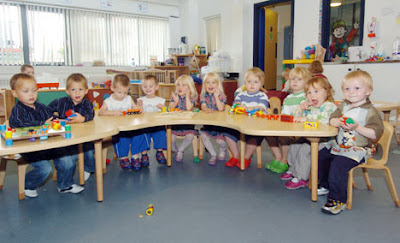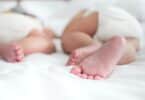Forget basic arithmetic, these students at Pembroke Dock Community School in Wales are doing a different kind of math. In one nursery class, there are not just one or two sets of twins, but a whopping five pairs! That’s right, ten toddlers who share the unique bond of being twins.
 Fran Thomas, the teacher in charge of the class, admits it can get a little confusing at times. “Seeing double is an everyday occurrence for us,” she says. “Having one set of twins is already unusual, but five sets is something I’ve never seen before.”
Fran Thomas, the teacher in charge of the class, admits it can get a little confusing at times. “Seeing double is an everyday occurrence for us,” she says. “Having one set of twins is already unusual, but five sets is something I’ve never seen before.”
The twins, aged two and three, make up half of the class and attend the newly-formed Flying Start nursery. What’s even more remarkable is that six of the ten twins are identical. It’s so unlikely for all these twins to be in the same nursery that mathematicians have calculated the probability as almost zero.
Playgroup leader Carol Mansell describes the twins as “adorable little angels…with a mischievous side.” The children all get along well, but the twins have a special connection that is hard to miss. “If one of them is absent, the other is noticeably less confident,” says colleague Lynda Gould.
While the chances of having five sets of twins in one class are incredibly slim, experts say that the rising number of twins in recent years can be attributed, in part, to the use of fertility drugs and the trend of having children later in life. Statistics show that the chance of having twins increases with age, reaching up to 20-25% for those who undergo fertility treatments.
For now, the class of twins continues to amaze and delight both teachers and parents. Who knows, they might just spend their entire school careers together, creating unforgettable memories and forging an unbreakable bond.






